The Leibniz-IZW regular publishes press releases on key findings and insights from its research and on events, awards or personalia. The press releases are distributed directly to journalists on our press release distribution mailing list. Press releases are also disseminated through the distribution services Informationsdienst Wissenschaft, AlphaGalileo and EurekAlert. Are you interested in receiving our press releases directly via e-mail? In this case please send us an email to presse@izw-berlin.de.
Current press releases
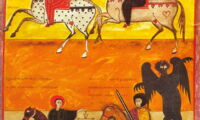
The Emperor's New Coats – the history of horse coat colours
Human preferences for horse coat colours have changed greatly over time and across cultures. Spotted and diluted horses were more frequent from the beginning of domestication until the end of the Roman Empire, whereas solid colours (bay, black and chestnut) were predominant in the Middle Ages. These are the findings of an international research team under the direction of the Leibniz Institute for Zoo and Wildlife Research (IZW). The results have just been published in the open access journal “Scientific Reports”.
Read more … The Emperor's New Coats – the history of horse coat colours
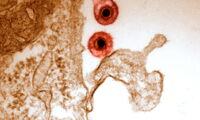
Herpes, not quite so species specific after all
A new study challenges the tenet of herpes viruses being strictly host-specific. Scientists from the Leibniz Institute for Zoo and Wildlife Research (IZW) in Germany have discovered that gammaherpesviruses switch their hosts more frequently than previously thought. In fact, bats and primates appear to be responsible for the transfer of these viruses to other mammals in many cases. The findings were published in the scientific journal “mBio”.

Leibniz-IZW is honored with the "UN-Decade for Biodiversity Award“
Sabah-Rhino Project“ of the Leibniz Institute for Zoo and Wildlife Research (IZW) was awarded as an official project of the UN-Decade for Biodiversity. This tribute is given to projects, which remarkably campaign for the preservation of biodiversity.
Read more … Leibniz-IZW is honored with the "UN-Decade for Biodiversity Award“
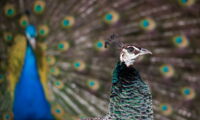
How choosy should you be?
When animals choose their mates, how discriminate they are varies a great deal. For some male Mormon crickets, any female will do; in contrast, blue peahens rarely fall for the first cock courting them. Across nature, all kinds of situations seem to occur (albeit with different frequencies): indiscriminate males and females, only choosy females, only choosy males, very choosy everybody, as well as any situation in between. In a recent study, Alexandre Courtiol from the Leibniz Institute for Zoo and Wildlife Research in Berlin (Germany) and his collaborators from the Institut des Sciences de l’Evolution in Montpellier (France) conclude that how choosy animals are is something that emerges predictably from the biology of each species and sex. This finding matters because—by impacting on who mixes their genes with whom—choosiness is a key factor shaping the biodiversity of species. This, in turn, has implications for conservation.
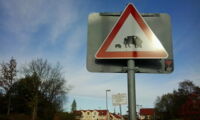
Berlin wild boars: The one faithful city borough dwellers, the other from the surrounding area
Berlin’s urban forests harbour isolated wild boar populations, whereas urban wild boars from built-up areas originate from neighbouring rural areas. This is the surprising result of a scientific study by the German Leibniz Institute for Zoo and Wildlife Research (Leibniz-IZW), the „Landeslabor Berlin Brandenburg“ and the Natural History Museum in Luxemburg which used techniques from molecular genetics to analyse the structure and origins of the wild boar populations. The study was part of a doctoral dissertation funded by the IZW and financially supported by National Geographic and the Foundation for Nature Conservation Berlin (“Stiftung Naturschutz Berlin”). The results are published in the scientific journal “Journal of Applied Ecology”.
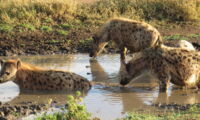
Long-term monitoring of sapovirus infection in wild carnivores in the Serengeti: novel strains, host-species specificity and a declining infection risk with increasing group size
Sapoviruses are an emerging group of viruses of the group of caliciviruses and well known agents of gastric enteritis, but very little is currently known about their role in wildlife ecology or the genetic strains that infect wildlife. Research findings by a group of scientists led by the Leibniz Institute for Zoo and Wildlife Research (IZW) describe for the first time, sapovirus infection in African wild carnivores in the Serengeti ecosystem, including the spotted hyena, the African lion and the bat-eared fox. The results from two decades of monitoring revealed several sapovirus outbreaks of infection in spotted hyenas and, counter-intuitively, that the risk of infection declined as group sizes increased. These findings were published in the scientific magazine “PLOS ONE”.

LED-lighting influences the activity of bats
The widespread replacement of conventional bulbs in street lighting by energy-saving light-emitting diodes (LEDs) has considerable influence on bats as urban nocturnal hunters. Opportunistic bats lose hunting opportunities whereas light sensitive species benefit. This was shown in a recent study by Christian Voigt and Daniel Lewanzik from the Leibniz Institute for Zoo and Wildlife Research (IZW).
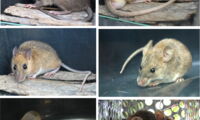
Discovery of an ape virus in an Indonesian rodent species
The gibbon ape leukemia virus (GALV) is a medically important tool in cancer therapies. GALV is a retrovirus pathogenic to its host species, the southeast Asian lar gibbon (Hylobates lar) and thought to have originated from a cross-species transmission and may not originally be a primate virus at all. An international research team headed by the German Leibniz Institute for Zoo and Wildlife Research (IZW) screened a wide range of rodents from southeast Asia for GALV-like sequences. The discovery of a new GALV in the grassland melomys (Melomys burtoni) from Indonesian New Guinea supports the hypothesis that this host species, and potentially related rodent lineages in Australia and Papua New Guinea, may have played a key role in the spread of GALV-like viruses. The findings were published in the scientific journal “Journal of Virology”.
Read more … Discovery of an ape virus in an Indonesian rodent species

